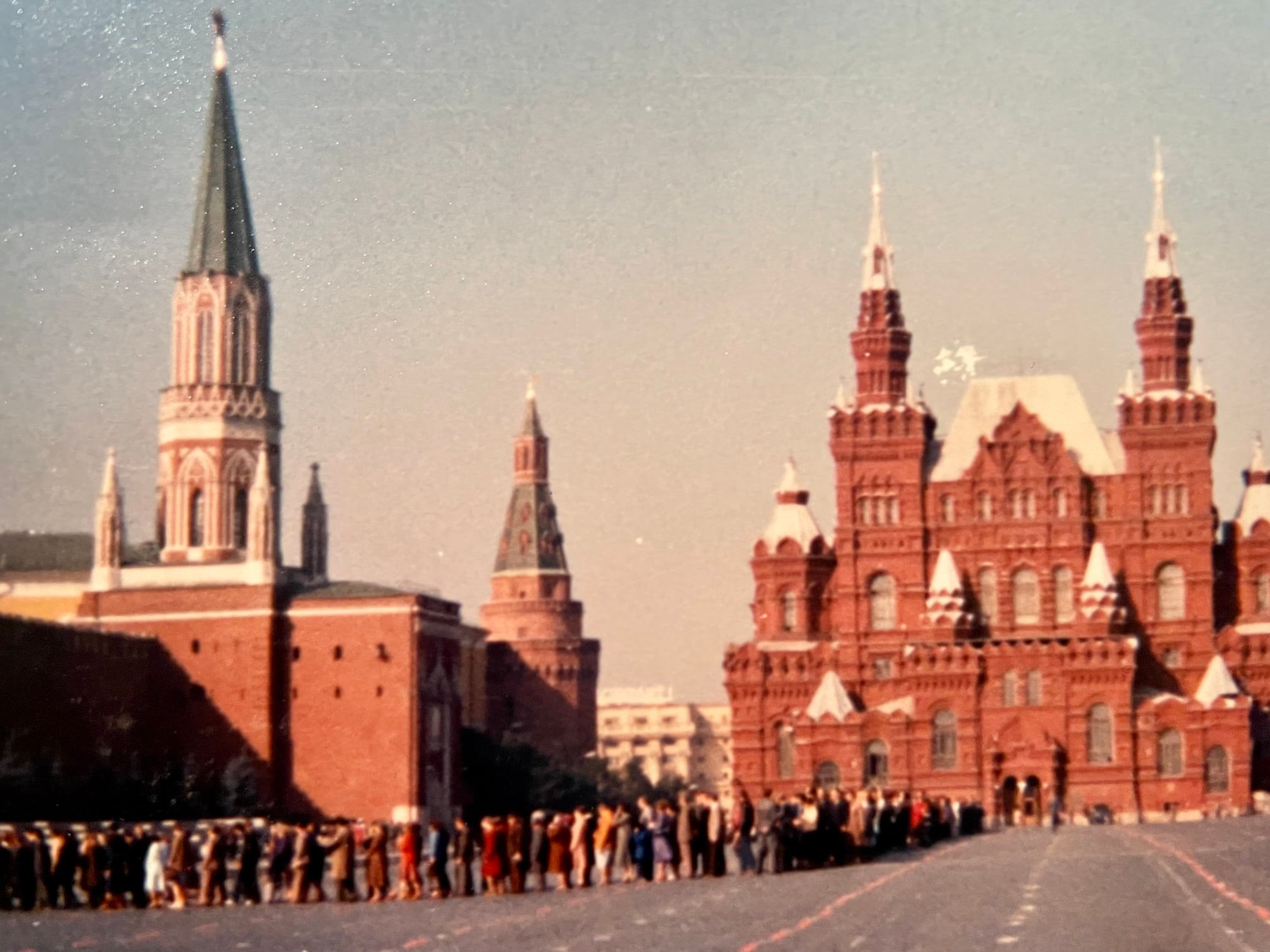APRIL 30, 2022 – In laying plans for my sojourn in Russia, I’d learned that Western tourists had no choice but to stay at deluxe hotels . . . and pay in advance (hence the “payment voucher”) with convertible currency at the official exchange rate. One bonus of this arrangement was access to a large supply of propagandistic literature in the hotel lobby—the Communist Party line aimed directly at foreign visitors—and Moscow’s Hotel National near Red Square was particularly well stocked. Available in several languages, the booklets and pamphlets were amusing and fascinating for their strained earnestness, and I collected some choice selections. Under the direction of Communist Party operatives, a large cast of writers, editors, and translators had produced reams of idealistic narratives and convoluted analyses of a social, political, and economic system that had been refined to perfection. The reality, of course, was not so perfect. As observed by the Somali passenger aboard the Leningrad-Moscow train: “What they say and what they do are two different things.” My favorite booklet title was, Can the Russians be Trusted?
After checking in and inspecting my room (and making faces at the chandelier, which, I imagined, hid a surveillance camera), I hit the pavement to see Red Square, which was bounded by the Kremlin wall and Lenin’s tomb on one side, the GUM* department store on the opposite side, the Lenin State Historical Museum on a third side, and on the fourth side, the stunning, signature architectural statement of Moscow—St. Basil’s Cathedral. Having seen myriad photos and film clips of Red Square and its surroundings, as I strolled about I felt the weight of history emanating from the onion domes, the crenelated Kremlin wall, the mausoleum with the Politburo viewing stand above it, and the cobblestones of the square itself.
The most notable feature, however, was the interminable queue of citizens waiting to shuffle past the heavily embalmed remains of the Soviet god, Vladimir Lenin. Not being of that religion, however, I didn’t join the line.
I was eager, however, to cross Red Square and explore the “showcase” department store of the USSR. Like so many things in Russia, GUM’s footprint was much more impressive than its contents. I devoted a couple of hours to strolling around, observing shoppers, eyeing inventory, and studying how business was transacted. The process gave me insight into what was heralded as the Soviet consumer economy.
That economy was marked by three features: 1. Low quality; 2. Low quantities; and 3. Low efficiency. Standing in line for consumer goods was a national pastime, and GUM allowed me to experience the phenomenon in full. First you stood in line to see what product was being offered so you could reserve it—shoes, gloves, boots, what have you.** Then you stood in another line to pay for the item—which the clerk “rang up” on an abacus. (Russian clerks worked these ancient devices faster than an American accountant could operate an electronic calculator.) Finally, you stood in a third line to pick up the item you’d purchased.
I stood in several lines just to see what products were being offered (mostly basic articles of clothing; a few cheesy accessories; basic furnishings; a selection of cheap toys). It seemed that when style was involved, the choice was between drab and drab. I went all the way with a set of five of the cheapest pens I’d ever seen, each good for about 100 monosyllabic words—which, I noticed, soon faded until the ink disappeared altogether.
_____________________
*“ГУМ,” in Cyrillic, was the acronym for Главный универсальный магазин, or “Glavnyy Universalnyy Magazin” (romanized), meaning, “Main Universal Store.”
** As I later learned, because of chronic shortages (a result of central planning), consumers didn’t buy what they wanted or needed but what was being offered on any given day. They’d later barter with other consumers for desired goods—the gloves that were available and therefore purchased on Monday, for example, could be traded for the socks that were in stock and thus bought by someone else on Tuesday.
(Remember to subscribe to this blog and receive notifications of new posts by email.)
© 2022 by Eric Nilsson
